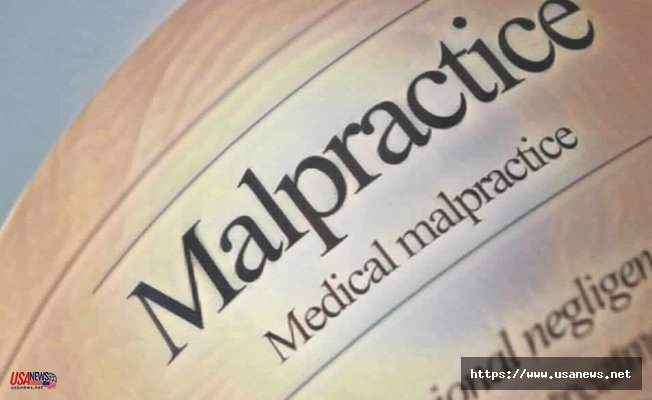In the intricate realm of healthcare, where precision and compassion converge, the deciphering of negligence holds profound significance. This comprehensive guide seeks to unravel the intricacies surrounding healthcare negligence, offering a nuanced understanding that transcends legal technicalities. As we embark on this journey, envision the unfolding narrative as an ancient manuscript, unlocking the secrets to comprehending the complexities of medical malpractice.
The Essence of Negligence in Healthcare
According to one law firm, negligence in healthcare is not a mere deviation from protocols; it encapsulates a breach of trust, a violation of the sacred covenant between a patient and their healthcare provider. At its core, it signifies a failure to meet the established standard of care, resulting in harm to the patient. To grasp the essence of negligence, one must delve into the heart of healthcare, where the intricacies of duty and responsibility converge.
Trust is the cornerstone of any patient-provider relationship. The implicit understanding that a healthcare professional will act in the best interest of the patient forms the basis of this trust. The breach of this trust through negligence not only results in physical harm but also erodes the very foundation upon which the healthcare system stands.
Distinguishing Negligence from Unfortunate Outcomes
The thin line differentiating negligence from inevitable medical outcomes demands a discerning eye. While healthcare professionals strive for excellence, not every adverse consequence is rooted in malpractice. A comparative analysis of cases can shed light on this distinction.
Within the intricate tapestry of healthcare, the ability to distinguish cases of negligence from those marked by genuine unfortunate outcomes is paramount. A comparative analysis offers a discerning lens through which we can unravel the complexities inherent in medical malpractice. Consider, for instance, a case where a surgeon meticulously follows established protocols, yet an unexpected complication arises during a procedure. In this scenario, the unfortunate outcome stems from the inherent uncertainties of medical interventions rather than negligence. Conversely, envision a case where a healthcare provider neglects to communicate crucial information to a patient, resulting in unforeseen harm. Here, negligence manifests as a breach of the duty to provide comprehensive and transparent care. By juxtaposing such cases, we can emphasize the distinguishing factors between negligence and outcomes that, despite best efforts, fall within the realm of the unpredictable. This comparative analysis not only sharpens our understanding but also fosters a nuanced approach to adjudicating cases within the complex landscape of healthcare.
Exploring real-world scenarios where medical procedures, despite adherence to protocols, yield unintended results offers valuable insights. Understanding cases where professionals acted diligently, yet outcomes deviated from expectations, aids in distinguishing negligence from outcomes inherent to the practice of medicine.
Navigating Medical Malpractice Laws: A Historical Context
To navigate the legal landscape of medical malpractice, one must traverse the corridors of history where precedents were set and laws evolved. The historical context of medical malpractice laws provides a lens through which we can comprehend the dynamic nature of healthcare accountability.
Delving into cases that have left an indelible mark on medical malpractice laws allows for a comparative analysis of legal evolution. Understanding the outcomes of these cases and the subsequent changes in legislation provides a contextual backdrop to the contemporary healthcare legal framework.
The Pivotal Role of Attorneys in Healthcare Justice
In the pursuit of justice for victims of healthcare negligence, attorneys emerge as the champions of accountability. Their active involvement, from the initial consultation to the courtroom battleground, is akin to navigating uncharted territories.
Exploring the strategies attorneys employ in building a case against healthcare providers enhances our understanding. From meticulous evidence collection to leveraging legal precedents, the role of attorneys is multifaceted. This subtopic sheds light on the dynamic nature of legal battles within the healthcare domain.
Proving Negligence: The Meticulous Art of Gathering Evidence
Proving negligence necessitates a meticulous gathering of evidence, an art form in itself within the legal realm. Imagine a scenario where medical records, expert testimonies, and a thorough examination of facts converge to construct a compelling case.
In navigating the legal labyrinth of healthcare negligence, attorneys wield a repertoire of strategic tools, each honed to secure justice for the aggrieved. Active engagement begins with a thorough analysis of legal precedents, where attorneys mine past cases to extract valuable insights that fortify their arguments. Transitioning seamlessly into negotiation rooms, attorneys employ nuanced techniques to advocate for their clients, seeking amicable resolutions where possible. However, should the battleground shift to the courtroom, their arsenal expands. Courtroom tactics come to the fore, with attorneys employing compelling storytelling, expert witness examinations, and a mastery of legal nuances. This multifaceted approach showcases the dynamic strategies attorneys deploy, ensuring a comprehensive pursuit of justice within the intricate realm of healthcare negligence.
Medical records are the backbone of any healthcare negligence case. Analyzing the weight and significance of medical records in proving negligence provides insights into the meticulous nature of this process. The subtopic explores how the details within these records can make or break a case.
Conclusion: Decoding Negligence for a Just Healthcare Future
In conclusion, the journey through decoding negligence in healthcare unveils not just a retrospective understanding but a dynamic blueprint for the future. The comparative analysis of historical shifts, the essence of negligence, the role of attorneys, and the meticulous process of evidence gathering highlights the intricate dance between trust, accountability, and justice within healthcare. Looking forward, the future of healthcare accountability holds promise and challenges in equal measure. Emerging trends, such as artificial intelligence in diagnostics and increased patient empowerment through digital health tools, introduce new dimensions to the landscape. The comparative analysis reveals that as healthcare evolves, so too must our approach to decoding negligence. Striking a balance between innovation and accountability is the crux of future trends. As we march forward, the collective commitment to learning from historical lessons, adapting to contemporary challenges, and anticipating future trends will sculpt a healthcare landscape where negligence is minimized, trust is fortified, and justice prevails. The journey of decoding negligence is not a static quest; it's an evolving narrative that guides us towards a future where healthcare is synonymous with both excellence and integrity.













